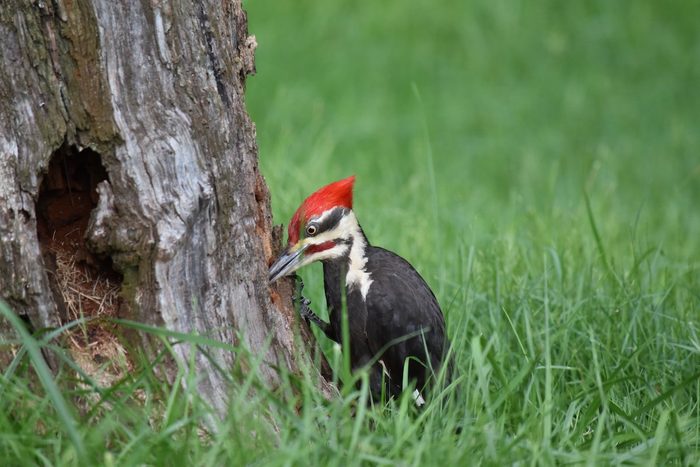
1. Woodpecker Facts: They Prefer Dead Trees
Gardeners and homeowners will appreciate this one of our woodpecker facts. Don’t worry about these birds damaging your trees. The birds prefer dead or dying trees because the trees are insect magnets. It’s also easier to drill into a snag, which is a dead or dying tree. The soft rotting wood is perfect for finding insects and carving a nesting cavity.
But the birds will also visit live trees, which may contain tree-dwelling or wood-boring insects. Several species of woodpeckers pry off the outer layers of bark from trees to expose insects and then drill into the softer bark beneath to look for insect larvae. This is referred to as “bark sloughing.”
Here’s 11 types of woodpeckers that may be in your backyard.
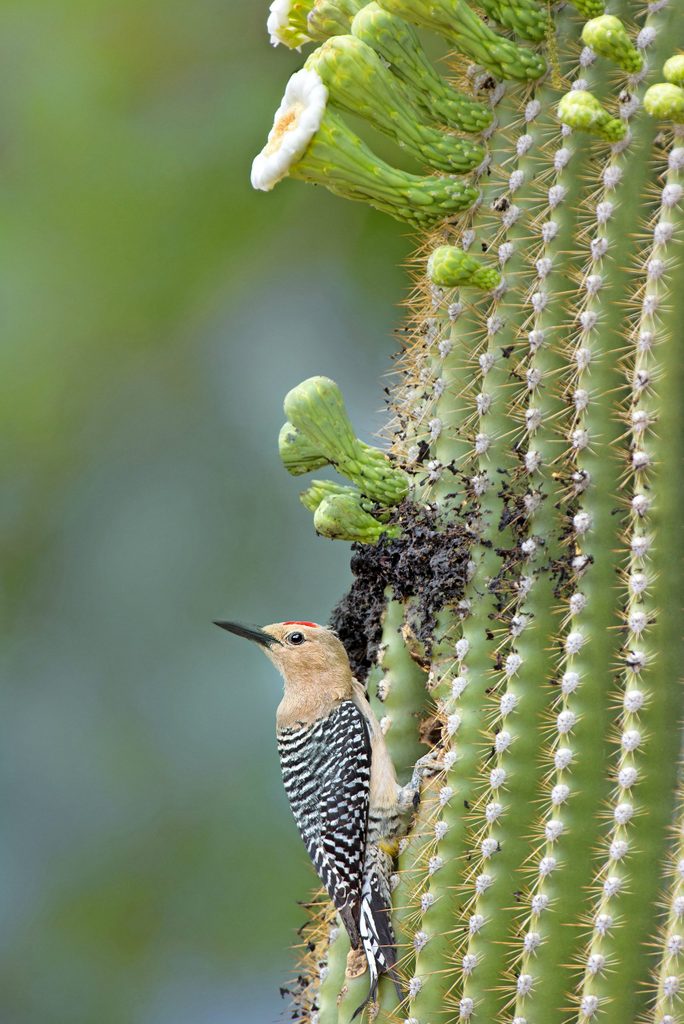
2. Woodpeckers Are Found Nearly Everywhere
Most woodpeckers are tied to forests, woodlands and shrublands. But some species, such as northern flickers, hang out in woodland edges. Downy woodpeckers look for spots near water and acorn woodpeckers seek out oak woodlands.
But some woodpeckers are desert birds. The Gila woodpecker thrives in the nearly treeless desert habitats of the southwestern United States and Mexico. These woodpeckers excavate holes in living saguaro cactuses, allow the plants to dry out and then inhabit them.
Where do woodpeckers migrate in winter?
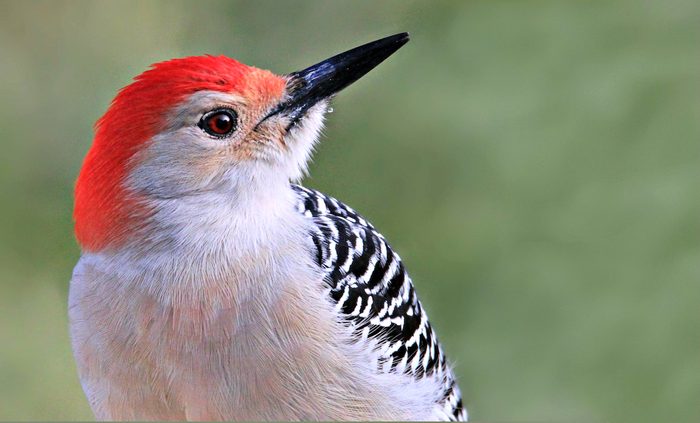
3. Woodpeckers Have Strong Head Muscles
Strong, dense neck muscles allow woodpeckers to repeatedly drill up to 20 times a second, while extra muscles in the skull act as a protective helmet by keeping the brain from jiggling around when a woodpecker is drumming.
Find out why woodpeckers peck and how to stop it.
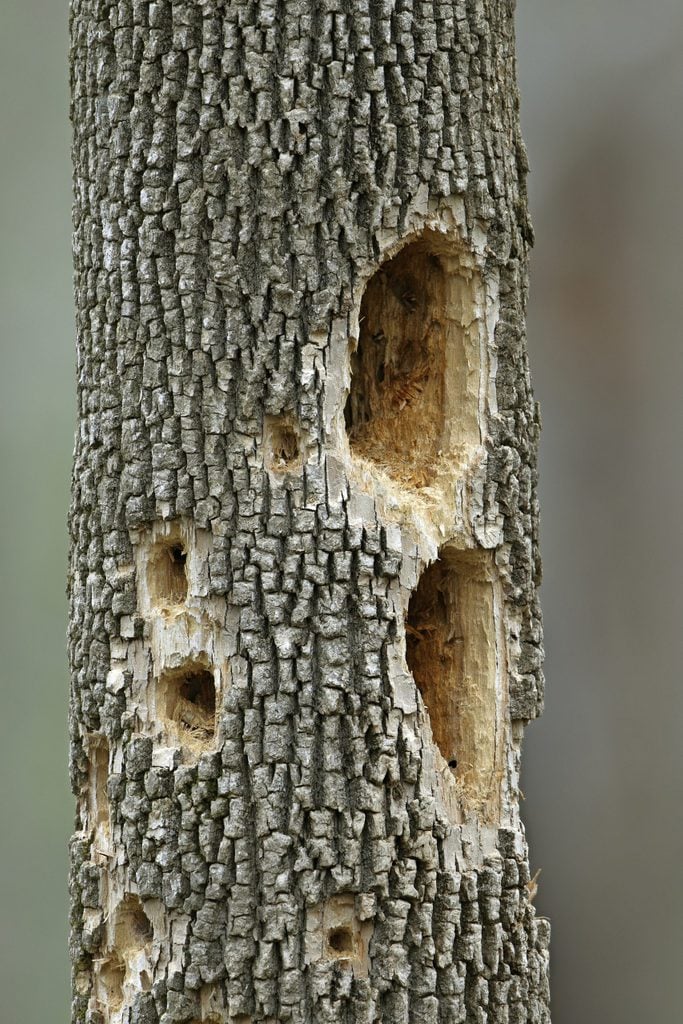
4. Woodpeckers Drill Holes Depending on Their Size
Usually, the bigger the woodpecker, the bigger the hole it makes. The nesting cavities of pileated woodpeckers range from 10 to 24 inches deep, which is twice as deep as those of downy and red-bellied woodpeckers.
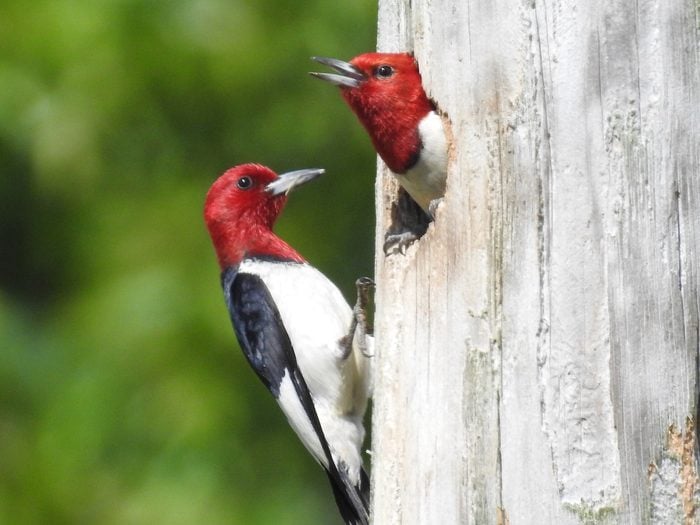
5. Woodpeckers Use Their Bills for Drilling and Drumming
These birds use their bills for two behaviors: drilling and drumming. They use their sharp beaks to drill into trees to find food or to make holes for nesting and roosting in spring and fall.
Drumming, on the other hand, is most commonly done in spring to attract a mate or to mark territory by alerting the competition.
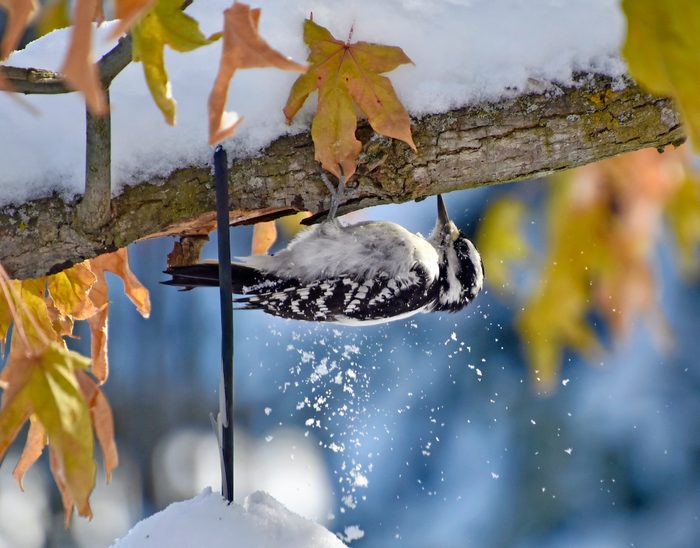
6. They Have Excellent Hearing
Woodpeckers, like the hairy woodpecker, listen for the sounds of insects crawling and chewing in the wood of a tree before using their strong, sharp bills to capture their prey.
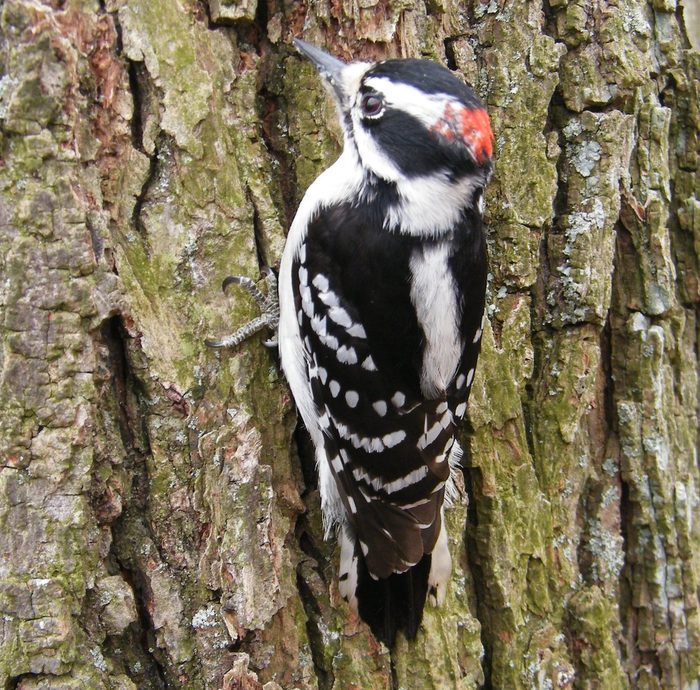
7. Woodpeckers Have Adapted to Cling to Trees
Stiff tail feathers act as a brace, forming a tripod with the bird’s feet to stabilize a woodpecker as it hops up a tree and chisels into the bark.
Downy vs hairy woodpecker: how to tell the difference.
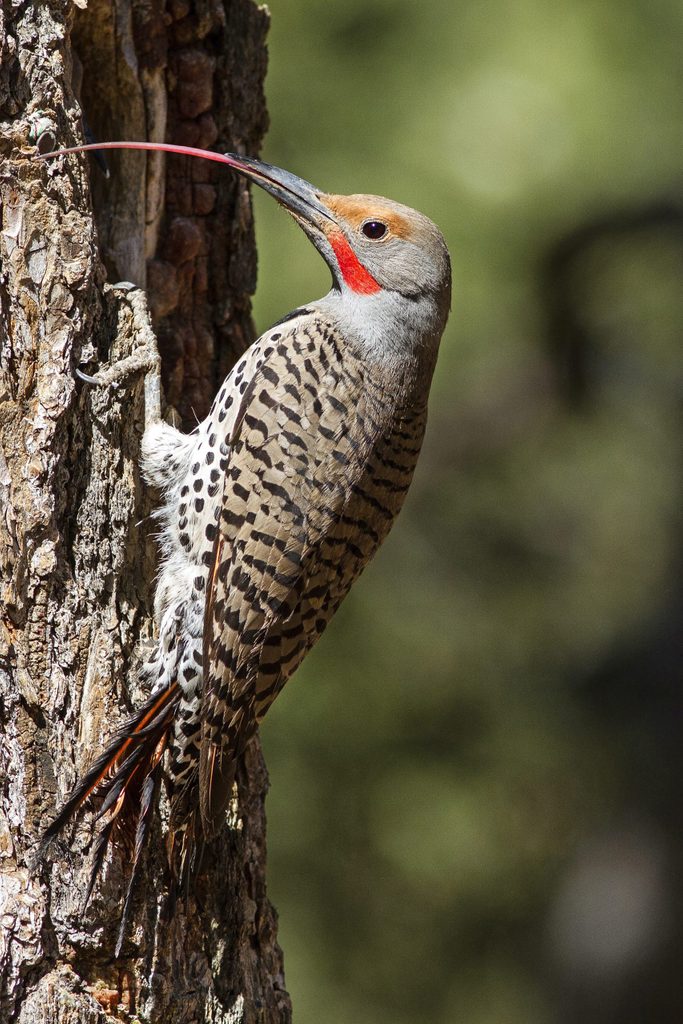
8. Long Tongues Reach Past Their Bills
To reach deep into crevices in search of grubs, ants and sap, a woodpecker’s tongue can be up to a third of its total body length—so long that when it’s retracted, it coils around the back of the bird’s skull.
Learn how to identify a red headed woodpecker.
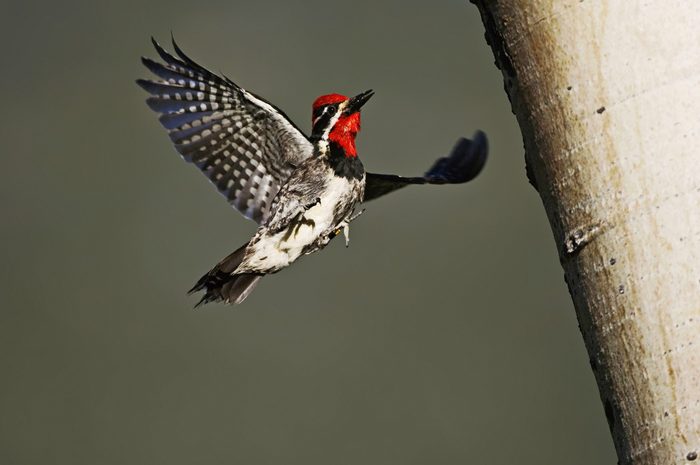
9. Woodpeckers Fly Like Goldfinches
Woodpeckers fly in an undulating pattern similar to that of goldfinches. “Unda” is a latin word that means wave. The motion is like a roller coaster—the bird flaps its wings during the rising phase, then glides as it descends into the valley of the wave.
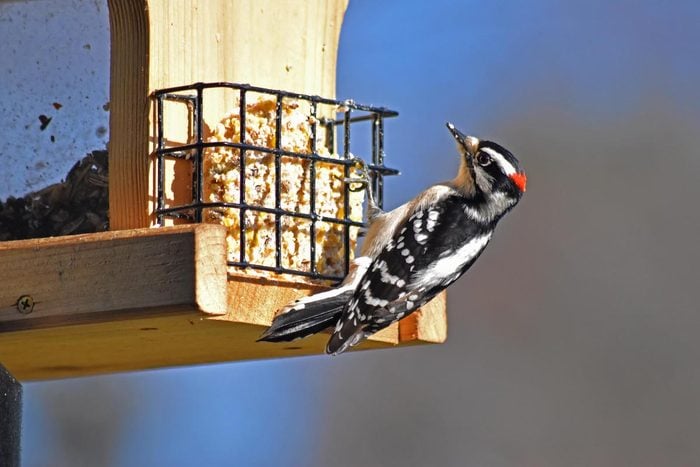
10. Woodpeckers Range in Size
In North America, the downy is the smallest and most widespread woodpecker. The largest is the pileated woodpecker. Ivory-billed woodpeckers are bigger, but are considered to be extinct.
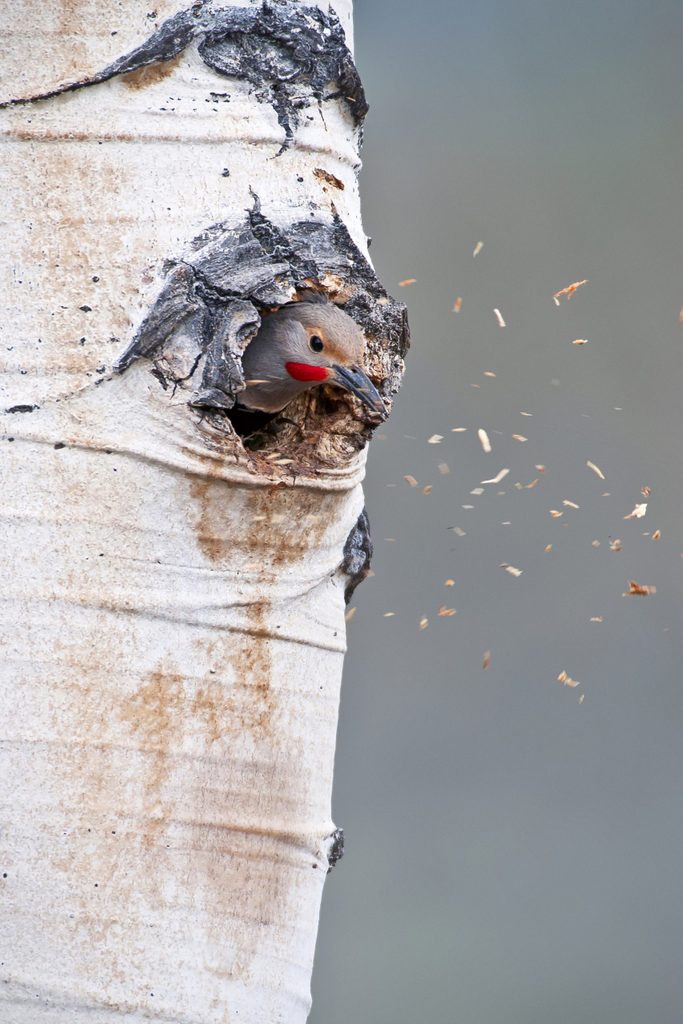
11. Woodpeckers Nest in Tree Cavities
Woodpeckers are primarily cavity nesters that excavate their own nest spots in dead or dying trees. The cavities will usually hold three to six eggs, and both parents tend the young birds. Woodpeckers sleep in cavities throughout the year.
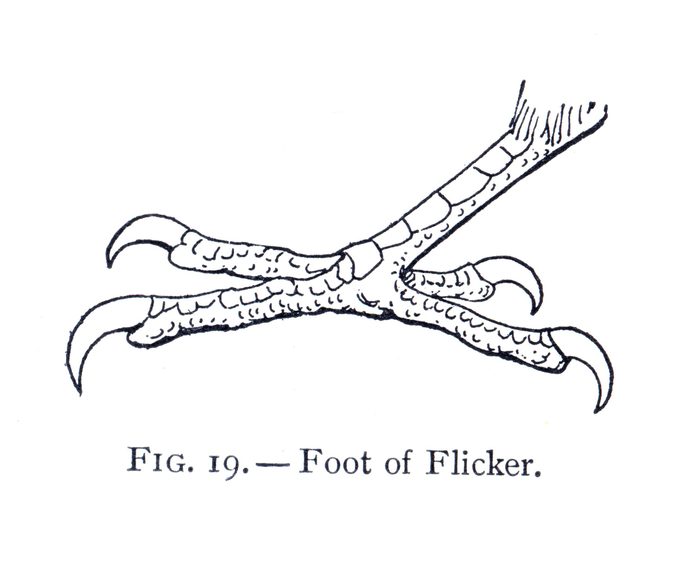
12. Woodpeckers Have Unique Feet
We found amazing woodpecker facts from their head to their toes! With four toes—the first and fourth facing backward, the second and third facing forward—woodpeckers can navigate up and around tree trunks. The scientific name for this toe arrangement is zygodactylism.
Learn more about how bird feet work.
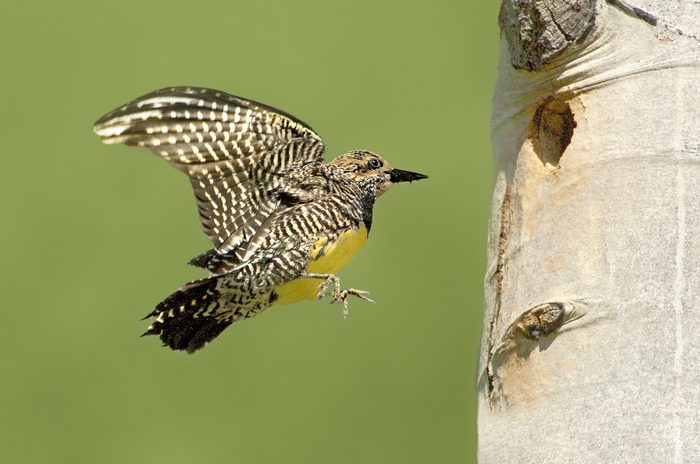
13. Males and Female Woodpeckers Look Different
Here’s one of the most helpful woodpecker facts for birders. In most species, males and females look similar. The only way to tell them apart is by red accents that are sometimes present on males.
Other male and female members of the woodpecker families are more distinct. Williamson sapsucker females look nothing like the males, which are black with red throats, yellow bellies and white wing bars. The species is found in western mountain forests. It may live in the same groves as red-naped and red-breasted sapsuckers.
Meet the sapsucker birds: woodpeckers with a sweet tooth.
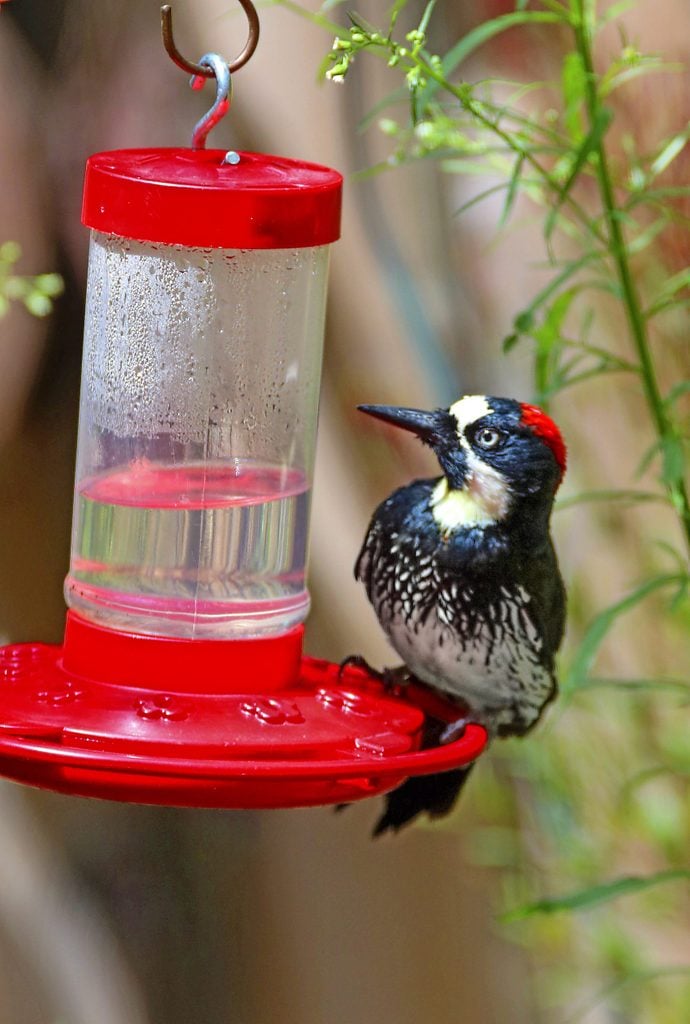
14. Woodpeckers Have a Varied Diet
As omnivores, woodpeckers eat a mix of foods. They target insects, spiders, seeds, nuts and acorns, as well as fruit and sap, and will even sip nectar from a hummingbird feeder on occasion. They also love suet, which you can provide in a hanging suet feeder cage to attract them to your yard.
